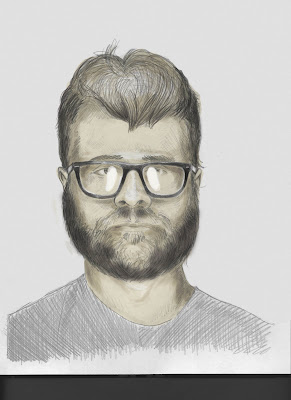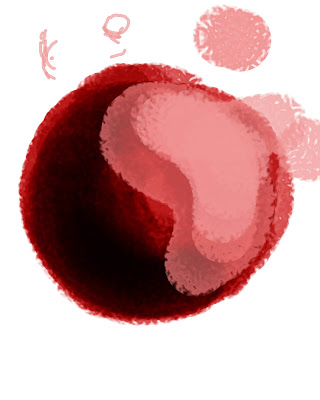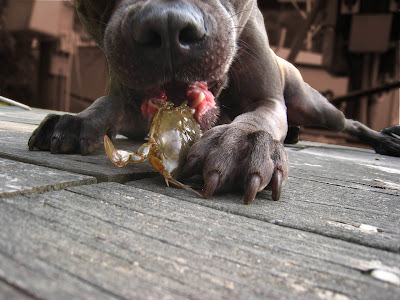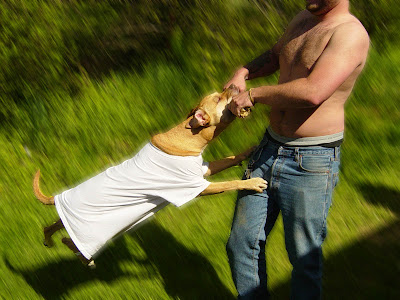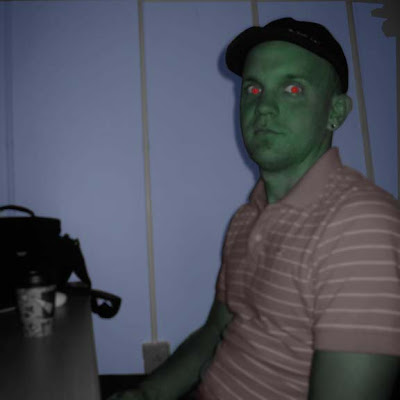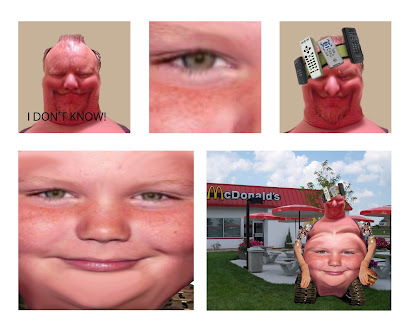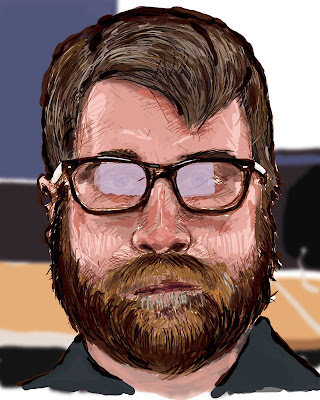 Above is the example of my portrait where I got it right. I didn't directly put any necessarily obvious visual symbols per se', but rather, feel like I wanted to sort of do my rendition of a portrait as my favorite portrait painter, Chuck Close, would have done it, if he were to use a computer and still had manual dexterity. I wanted to see if it was possible for me, at my skill level, to capture all of the tiredness that I was feeling in my face. I sort of made a half-smile-half-smirk. Chuck Close is 100% about process, and subscribed to a philosophy of "inspiration is for amateurs, the rest of us just show up and get to work". Of course I absolutely feel like my work is amateur and tiny in comparison to his, but what I hoped to convey was the emotion in my face; I made sure though to not pose too much for my Apple PhotoBooth photo, so as to sit in and let my natural sitting face do the talking. I understand that this stood a chance at failing to convey the essence of, "me", but given my relative skill level versus my skill level as a real painter, I felt like it was a cool challenge, after watching so many YouTube videos about Chuck Close and then about attempts at painting faces on a computer with a Wacom Bamboo tablet. Interestingly, I felt like to get a bit to the left of being photorealistic; in getting almost a complex cartoony, that a photoshop approach would be better suited, if I was going to try to replicate the feel of the style. I hope that this makes sense.
Above is the example of my portrait where I got it right. I didn't directly put any necessarily obvious visual symbols per se', but rather, feel like I wanted to sort of do my rendition of a portrait as my favorite portrait painter, Chuck Close, would have done it, if he were to use a computer and still had manual dexterity. I wanted to see if it was possible for me, at my skill level, to capture all of the tiredness that I was feeling in my face. I sort of made a half-smile-half-smirk. Chuck Close is 100% about process, and subscribed to a philosophy of "inspiration is for amateurs, the rest of us just show up and get to work". Of course I absolutely feel like my work is amateur and tiny in comparison to his, but what I hoped to convey was the emotion in my face; I made sure though to not pose too much for my Apple PhotoBooth photo, so as to sit in and let my natural sitting face do the talking. I understand that this stood a chance at failing to convey the essence of, "me", but given my relative skill level versus my skill level as a real painter, I felt like it was a cool challenge, after watching so many YouTube videos about Chuck Close and then about attempts at painting faces on a computer with a Wacom Bamboo tablet. Interestingly, I felt like to get a bit to the left of being photorealistic; in getting almost a complex cartoony, that a photoshop approach would be better suited, if I was going to try to replicate the feel of the style. I hope that this makes sense.I went through a similar process of painting/drawing with colored pencils to the process that I would use in real life-- I get the frame of the face all structured out, and then put in the eyes and the shape of the hair and beard. From there, I essentially followed a similar process that you might see painters use on youtube videos like "speed painting". I used the color eye-dropper to get colors matched as accurately as possible. It was a lot of fun. I used, generally, a 100% level of "hardness". I used about 5 colors or varying hues on the hair and the beard, and the same went for the face. I would use a larger diameter brush for painting in the facial skin colors, and then vary colors until they built up really well. It was a bit awkward trying to be accurate with the tablet, still. I feel like I want to get an Intuos 3. That's a higher-end one, with more levels of pressure variation. That was a big part of shaping my lines. Then I went in and took care of the reflection on my glasses. I did that with the regular lasso tool and put the paint bucket to work, in a low opacity light purple. The layer underneath was my background. I drew up a rendition of the background in my PhotoBooth photo, then selected that layer, and ran it through a gaussian blur. I thought that it took care of the focal point very well.
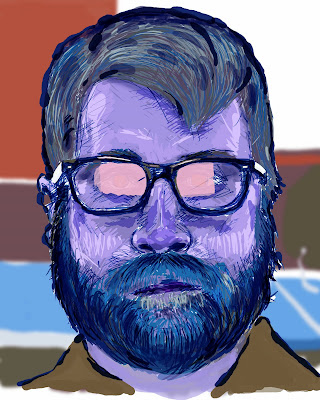
Second, is the example of putting my .jpeg up on the web without saving it in RGB mode first. You can see that there was a lot of color information lost in the web's own "translation" from a CMYK file to web. It got almost all of the colors wrong.
